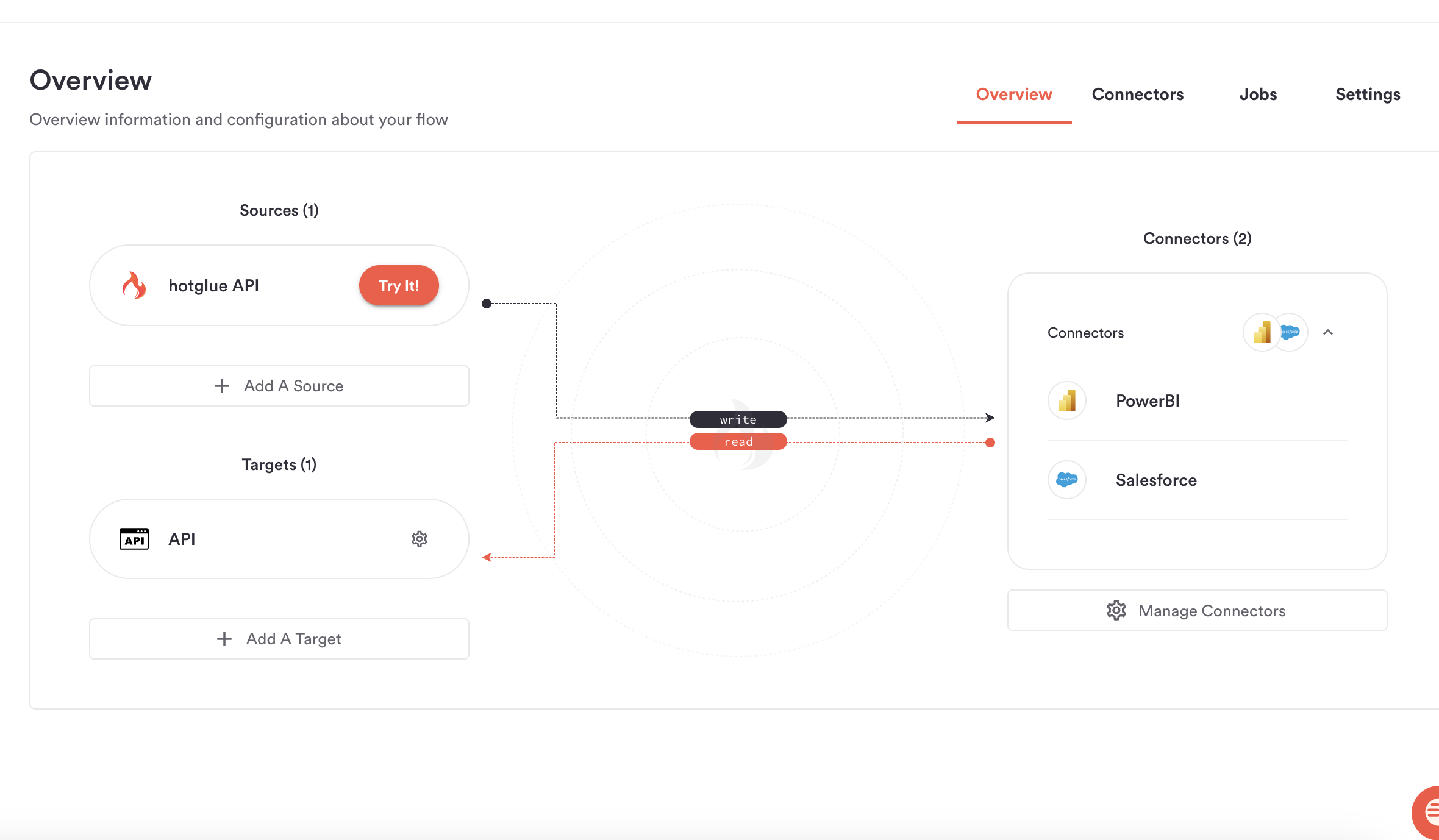Skip to main contentIf you need to read and write data to the same integration, you can use a bidirectional flow to use the same connection for both.
In a V2 flow, your tenants will link their account once, allowing you to run two types of jobs:
- Read jobs — Read data from their linked account
- Write jobs — Write data to their linked account
Bidirectional flows utilize the V2 API and V2 Connectors
Bidirectional flow structure
There are 3 types of connectors in a bidirectional flow:
- The primary connector which your tenant links to
- The target connector to be used in Read jobs
- The source connector to be used in Write jobs

Examples
Common uses of Bidirectional flows include:
- Have tenants link their CRM:
- Use Read jobs to sync their CRM data to your database
- Use Write jobs to sync custom fields from your platform to their CRM
- Have tenants link their own database:
- Use Read jobs to import their data into your platform via a webhook
- Use Write jobs to sync updates made on your platform back to their database
